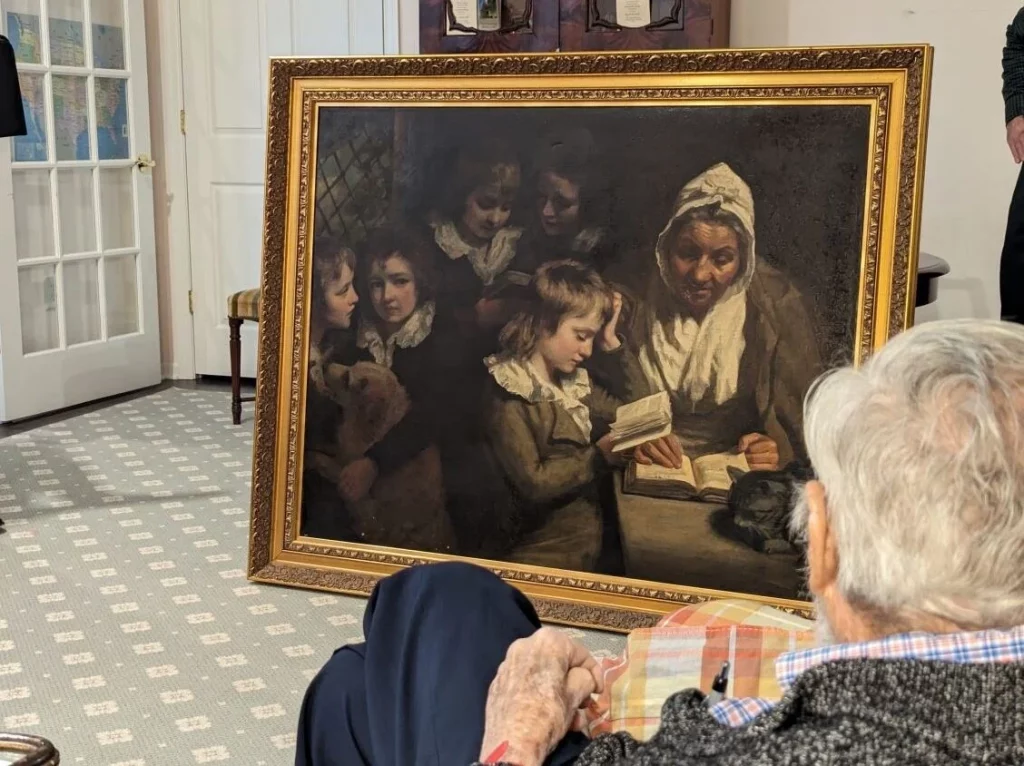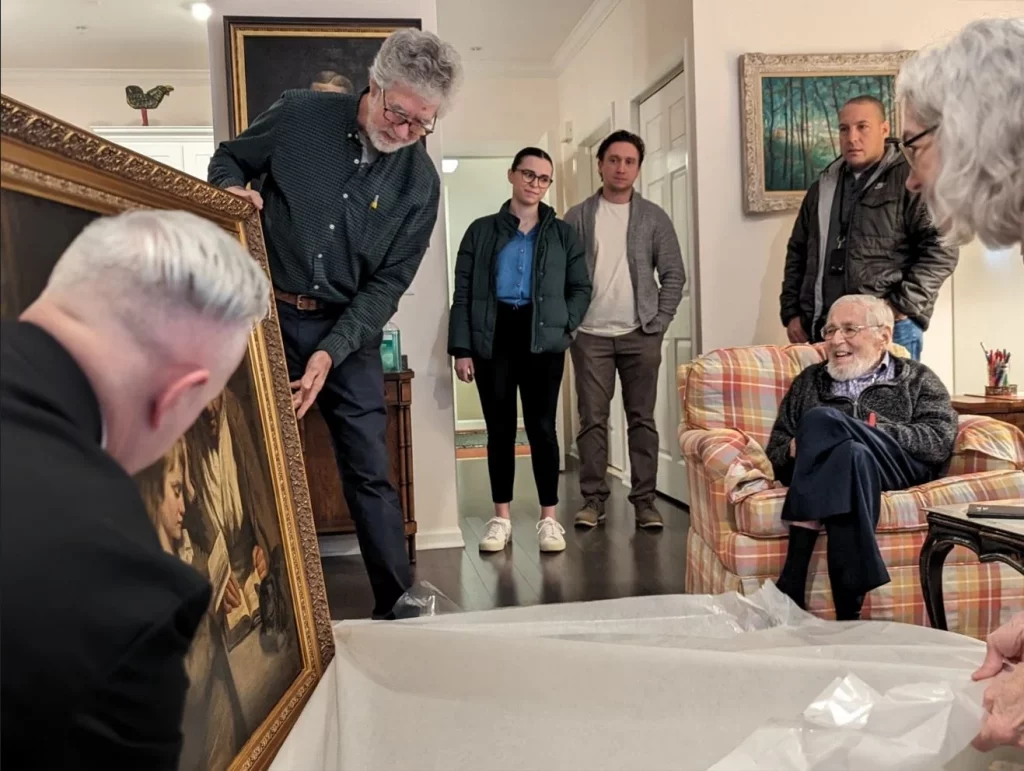Law & Politics
A ‘Priceless’ John Opie Painting Is Recovered Five Decades After It Was Stolen by Mobsters
The painting was found by an accounting firm cleaning out the estate of a client.

The painting was found by an accounting firm cleaning out the estate of a client.

Adam Schrader

A painting by the neoclassical portrait artist John Opie has been recovered and returned to the man who once owned it after it was stolen by members of the mafia in Newark, New Jersey, in 1969. The return of the painting, titled The Schoolmistress (ca. 1784), came after a two-year investigation by the FBI’s field office in Salt Lake City, which got a tip in December 2021 that the painting may have been found, officials said in a news release.
The large oil painting measures about 40 by 50 inches and depicts an 18th-century schoolteacher reading with a group of children. The work has a sister painting housed at the Tate Britain, though the models appear less engaged with each other. The stolen work also features a dog.
The HintonBurdick CPAs & Advisors firm in Utah, acting as a trustee for the estate of an unnamed client who died in 2020, had hired a third-party company to liquidate the man’s homes and personal property. After the work was discovered, the company sought an appraisal to auction it—until it was revealed that the painting had likely been stolen from a 96-year-old doctor named Francis Wood. The accounting firm then tipped off the FBI.
Wood’s father, Earl Leroy Wood, bought the painting sometime during the Great Depression for $7,500 (about $134,537 when adjusted for inflation from a date in January 1930).
The three mobsters—Gerald Festa, Gerald Donnerstag, and Austin Costiglione, who had ties to drug trafficking in New York—first raided Wood’s home to steal his coin collection on July 7, 1969. They were unsuccessful because of his home alarm system. The men returned to Wood’s home and stole the Opie painting later that month. At the time of the burglary, the home’s caretaker told Anthony Imperiale, a controversial state senator, that the painting was “priceless.”
During a 1975 court case, when Donnerstag and Festa were tried for murder, the latter testified and confessed to the burglary, saying they had acted under Imperiale’s direction. Before the burglary, the men allegedly visited Imperiale’s “clubhouse” and were told where to find the painting in Wood’s home, Festa alleged. Imperiale was never charged and Festa’s accusations were never corroborated.
“It is believed that law enforcement pressure resulted in the painting’s transfer to another mobster,” the FBI said in its statement. “The painting’s location between 1969 and the late 1980s is unknown but the FBI believes it remained in the hands of organized crime members.”
The unnamed man who last had the painting in his possession is not believed to be associated with the mafia. But he had the misfortune of buying a home in 1989 from a convicted Gambino-linked mafioso Joseph Covello, Sr., in the Florida town of Hallandale, which housed the painting. The man held on to the canvas. He ultimately moved to the city of St. George in Utah, where the painting stayed until his death.

Francis Wood and his family receiving the painting that was stolen from them decades ago. Photo courtesy of FBI
Gary France, an FBI special agent in Salt Lake City, took the painting into custody after the tip was first reported and presented it to Wood on January 11 at his home in Newark after a federal district judge in Utah resolved the question of ownership.
“It was an honor playing a role in recovering a significant piece of art and culture, and reuniting a family with its stolen heritage,” Special Agent France said. “In a world where criminal investigations often leave scars, it was a rare joy to be a part of a win-win case: a triumph for history, justice, and the Wood family.”